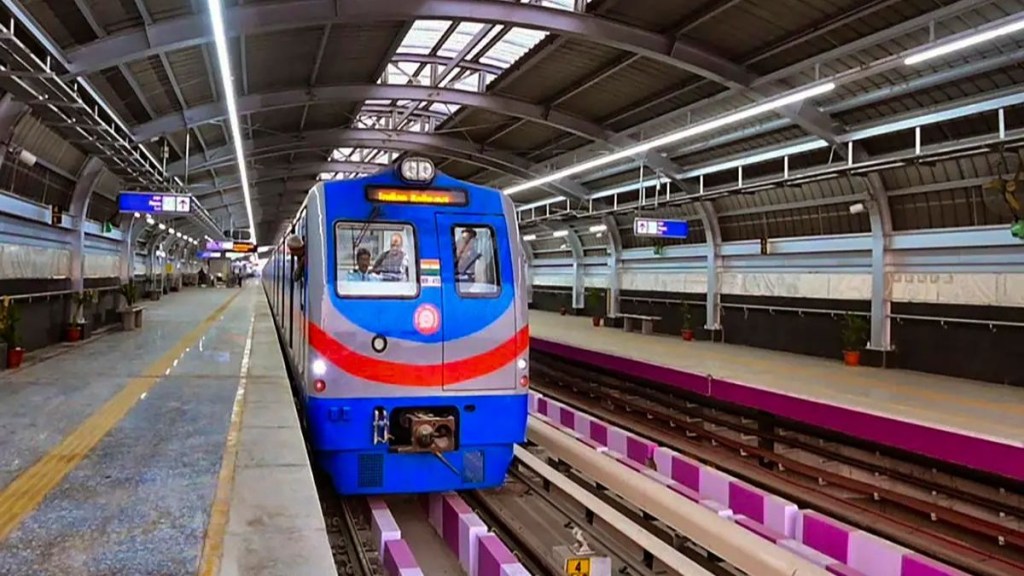The Communications-Based Train Control (CBTC) signalling work for the entire Howrah Maidan to Sector V stretch of Kolkata Metro’s East-West Metro began on Sunday, marking a historic step toward connecting Howrah with Sealdah, two of Eastern Railway’s busiest stations.
“We have finally mitigated the challenges posed by the Bowbazar tunnelling crisis and successfully connected Sealdah and Esplanade Metro stations. The electrical works related to the aluminium third rail are also nearing completion, and the electrical inspector has been approached for the statutory EIG inspection of the third rail before it is charged,” an official said.
Kolkata traffic block on Sundays
A complete traffic block on two Sundays (January 12 and 19) was requested by Kolkata Metro Rail Corporation Ltd. (KMRCL), which was immediately granted, the official added.
East-West Metro, also known as the Green Line, will save around 90 minutes for daily commuters who currently travel between Howrah and Sealdah in overcrowded, slow-moving buses or pollution-causing taxis.
CBTC signalling system commissioned on Kolkata Metro’s green line
“A request for full closure of Green Line service from February 8 to March 24 has been submitted by KMRCL. The demand has not been approved so far,” the official added.
A Metro Railway engineer explained, “The Green Line of Metro Railway, Kolkata, is the first corridor where the CBTC signalling system has been commissioned for safe and automatic train operations.”
“In addition to automatic train protection (ATP) to prevent collisions, speeding, and red light passing, this system will allow the Metro rake to operate in Automatic Train Operation (ATO) mode, where all rakes will communicate their position, speed, acceleration, and deceleration,” he added.
“The system is designed in such a way that the train driver acts as an observer, with the primary tasks of closing doors and pressing the train start button under normal conditions. In the event of an earthquake or emergency, a single button press at the control centre will stop all trains simultaneously, similar to how Japan manages emergencies. This feature is not possible with the existing North-South Corridor (Blue Line). With the same CBTC system, metros in London and Moscow operate with a 90-second headway, which is not achievable with other signalling systems,” the engineer explained.
Construction halted due to Bowbazar cave-in
Currently, Metro Railway Kolkata operates services on the East-West Corridor in two parts: Green Line-1 (from Salt Lake Sector V to Sealdah) and Green Line-2 (from Esplanade to Howrah Maidan). There was a missing link between Sealdah and Esplanade due to the Bowbazar cave-in five years ago, which affected tunneling work but was resolved last December.
“Now, the journey begins to establish the CBTC signalling system for the entire corridor as a unified whole, not as two separate corridors. Unlike rail track, tunneling, or third rail works, where the completion of a missing link means the job is done, the completion of the CBTC system means integrating the entire route into one complete unit,” the official said.
“KMRCL had requested a 45-day block to validate the newly installed software to fine-tune the software. If any issues arise, reports will be sent to overseas laboratories for adjustments. Once the software is fine-tuned, it will be reloaded, and the verification cycle will continue,” the official explained.
Safety checks and trial runs on green line
Before commissioning Green Line 1’s 5-km stretch, five rakes were run for a total of 10,000 km, conducting over 1,000 trials to secure third-party certification for safe operation.
“KMRCL plans to conduct similar trials across the entire stretch with the revised software. To obtain approval, KMRCL must ensure a 100 percent foolproof system,” the official added.
Once the safety and reliability of the state-of-the-art signalling system are confirmed, the entire installed system may be submitted to an international Independent Safety Assessor (ISA). After receiving the ISA certificate, the Chief Railway Safety Commissioner will conduct a statutory inspection before granting permission for the commercial use of the entire corridor, the official concluded.
